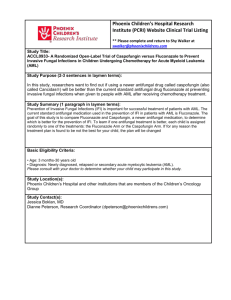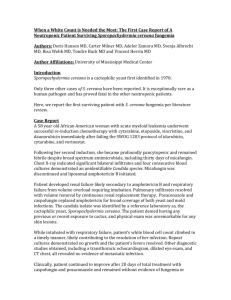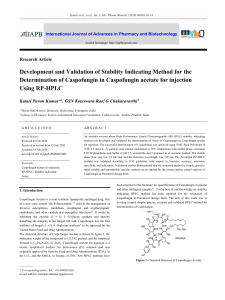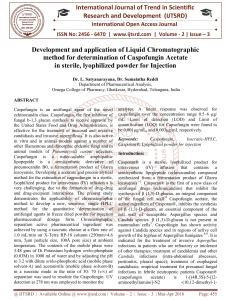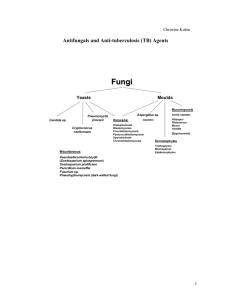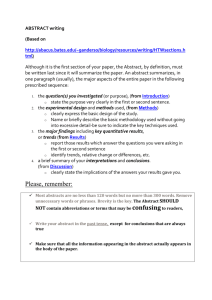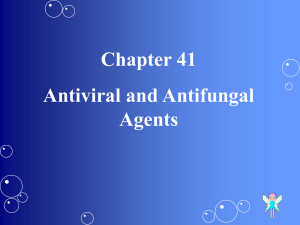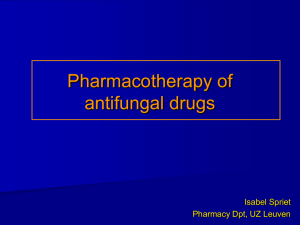a retrospective review of clinical outcomes in patients
advertisement
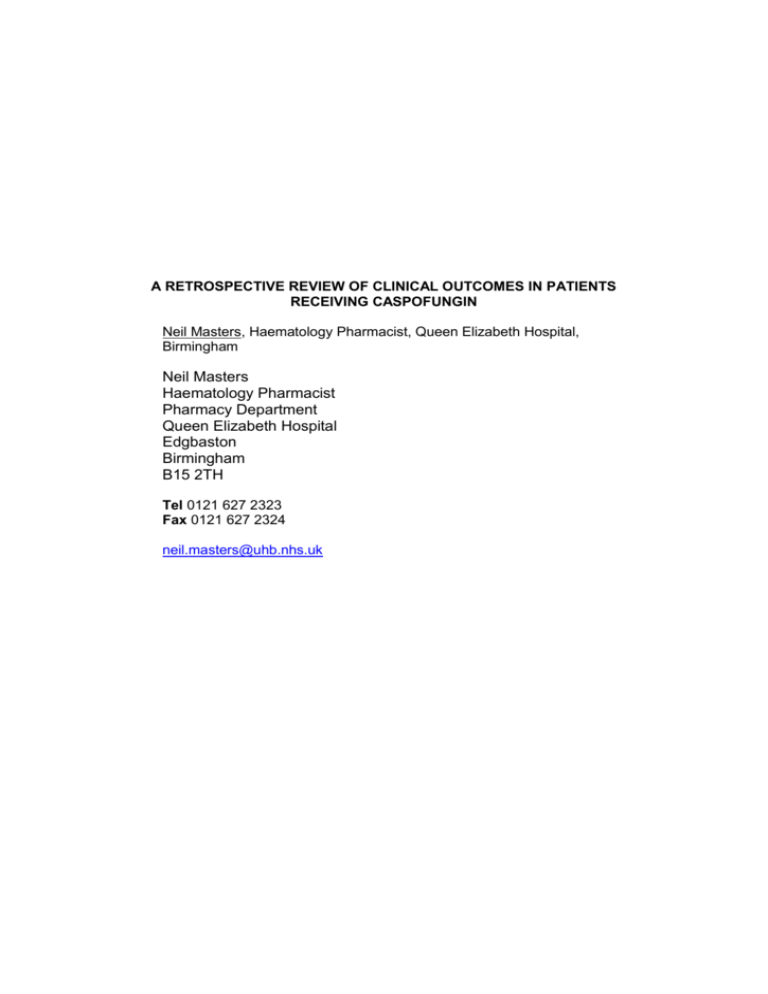
A RETROSPECTIVE REVIEW OF CLINICAL OUTCOMES IN PATIENTS RECEIVING CASPOFUNGIN Neil Masters, Haematology Pharmacist, Queen Elizabeth Hospital, Birmingham Neil Masters Haematology Pharmacist Pharmacy Department Queen Elizabeth Hospital Edgbaston Birmingham B15 2TH Tel 0121 627 2323 Fax 0121 627 2324 neil.masters@uhb.nhs.uk A RETROSPECTIVE REVIEW OF CLINICAL OUTCOMES IN PATIENTS RECEIVING CASPOFUNGIN Neil Masters, Pharmacy department, Queen Elizabeth Hospital, Birmingham Introduction Invasive fungal infections are a major cause of morbidity and mortality in patients undergoing allogeneic and autologous stem cell transplantation. Caspofungin is second line antifungal agent within our haematology unit for patients who are unresponsive or intolerant of Abelcet. There is evidence to suggest that caspofungin is at least as effective as conventional amphotericin B in the treatment of invasive candidasis1, and liposomal amphotericin B as empirical therapy for patients with pyrexia of unknown origin2. As part of continuing review of the units’ antifungal policy, it was deemed necessary to assess the efficacy, and tolerability of Caspofungin in our patients. This review would also identify if use of Caspofungin was within the policy recommendations. Methods In this retrospective audit we aim to collect data from 20 patients who have received at least 2 doses of Caspofungin within the last year to 18 months. The relevant clinical data was collected by the haematology pharmacist from patient’s clinical notes. Results/Discussion Between March 2005 and June 2006, 21 patients were identified as having received at least 2 doses of Caspofungin (mean 8.5 days). On 13 occasions Caspofungin was chosen as first-line treatment (raised creatinine n=11). On 9 occasions Caspofungin was second-line treatment (increased creatinine n= 4, intolerance of Abelcet n=2). As a result there were 1 complete response, and 5 partial responses (27% response rate). 3 patients had no response, and on13 occasion’s fungal infection was ruled out. No patients discontinued Caspofungin due to adverse events. The audit suggests from this group of patients that Caspofungin is being selected as antifungal therapy as per the unit policy. The drug appears well tolerated in our group of patients with little dose-limiting toxicity. Unfortunately comment on its efficacy in this group would not be prudent due to the large number of patients where invasive fungal infection was not present. References 1. Mora-Duarte J et al. (2002) Comparison of caspofungin and amphotericin B for invasive candidiasis. New England Journal of Medicine 347(25): 2020-9. 2. Walsh TJ et al (2004) Caspofungin versus liposomal amphotericin B for empirical antifungal therapy in patients with persistent fever and neutropenia. New England Journal of Medicine 351(14): 1391-1402.
